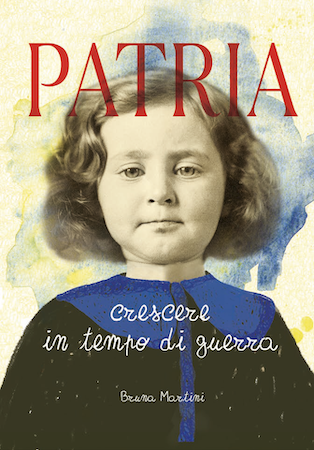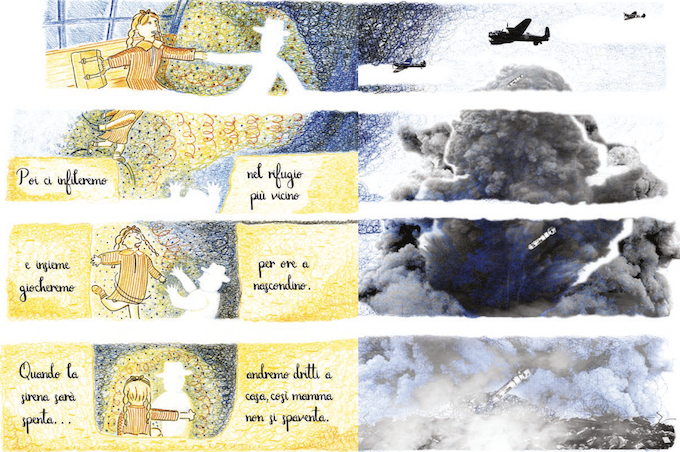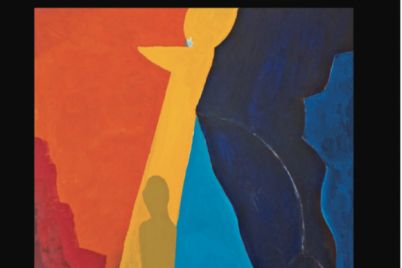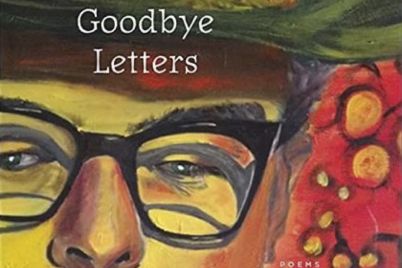Captivating and evocative, the graphic memoir Patria: Crescere in tempo di Guerra (The Fatherland: Growing Up in Times of War) by Bruna Martini is set in Fascist Italy before and during World War II. Bruna Martini, author of several graphic novels and illustrated books, tells the true story of her aunt, Graziella Mapelli, a little girl growing up in Italy during that period.
The story is told from the young girl’s perspective in the form of a private diary; the inclusion of photographs, newspaper clippings, posters of the era, postcards, notebooks, report cards and drawings makes the story even more authentic. These elements make the graphic memoir not only unique, but also compelling and instructive.
Graziella introduces us to the twenty years of fascism, characterized by the heavy propaganda of a nationalistic regime. Reciting nursery rhymes with innocence and naiveté, she tells us about her childhood in Trezzo sull’Adda (in the countryside outside Milan), introducing us to a peasant’s everyday life and the beauty of small things.
Particularly interesting is Bruna MartinI’s use of colours. She plays with the primary colours yellow and blue, which represent either positive or negative memories, depending on which colour predominates. Yellow predominating over blue, creating green, evokes life and the beauty of nature. On the other hand, black creeping in among the shades of blue evokes fascism and war.
In allowing us to see the world through her eyes, Graziella gives us a child’s perspective on how women and girls were treated under fascism as well as after the war. Few women could afford to go to “girls’ school”; these schools emphasized “a woman’s role,” which Graziella describes as being a “respectful, attentive to men’s needs, and ready to serve.”
The graphic novel also explores the privileges and responsibilities of being an older daughter in those times – a little-known reality. Graziella tells us that as the older sister, she “… has many responsibilities… first and foremost, cleaning regularly.” She also reveals, however, that she is “… the only sister who wears a skirt instead of a dress, with beautiful stockings, and heels one finger long.”
The graphic memoir divulges, unsurprisingly, that little of the Italian school curriculum was actually taught, the focus being instead on indoctrination, beginning in elementary school, based on the importance of homeland, war, and colonialism, rather than the study of literature and knowledge that could otherwise awaken people, make them think, and destroy the regime’s hold on them.
The war is presented in all its brutality: the sudden bombings, the constant anxiety of having to find shelter, the men and fathers at the front, and rationing as food became scarce. All of this is jarring and confusing for the little girl who at school finds herself studying the importance of the war. She sends letters of encouragement and packages with supplies to the soldiers on the front lines, while experiencing the personal impact of the war’s ferocity herself. Hence, Graziella clings to an imaginary friend who keeps her company in her moments of greatest fear, and who helps her understand that sometimes the boundaries between good and evil are blurred.
The graphic memoir also highlights the transatlantic departures from the port of Genoa in 1937. These migrations were different from those dictated by the search for work and for a better future. In fact, to avoid being summarily shot or taken to concentration camps because they were opponents of the new regime, many people – like Graziella’s uncle – were forced to start a new life far from their loved ones.
Bruna MartinI treats even the darkest pages of this history with tenderness and realism. Words such as expulsion, dispossession, destruction of property and race stand out for the reader. The memoir shows us the newspaper headlines that announced the enactment of the Racial Laws, underlining how the media supported such senselessness.
Both the Partisan struggle and liberation of Italy with the help of the Allies bring a new beginning for the country, slowly freeing it from the darkness of the war. The graphic memoir recalls the millions of “people who perished,” and reminds us that even after the war, many people lost their lives by unknowingly venturing into minefields.
The graphic memoir closes with a quick look at Graziella’s adult life. Despite her difficult childhood years, she found her safe-haven through family, never forgetting that imaginary friend who, as she points out, was her “moral compass to distinguish good from evil.”
Thanks to the way it intermingles genres, Patria: Crescere in tempo di guerra is a graphic memoir that should be read in primary and secondary schools. It would not only introduce children to the twenty years of fascism, the war and the Racial Laws, but also show them how much our perceived reality can mislead us, confuse us and make us lose ourselves as we navigate the thin line between good and evil.






